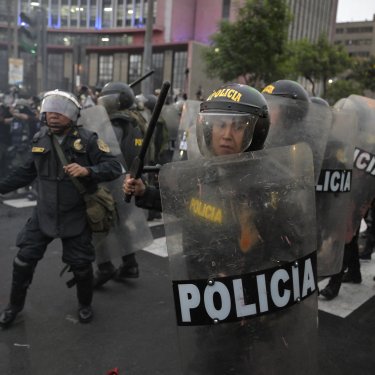RSF decries police violence against reporters covering protests in Peru

Nine journalists have been subjected to police violence or arbitrary arrest while covering a new wave of protests against President Dina Boluarte’s government in Peru in the past two weeks. Reporters Without Borders (RSF) condemns these attacks on press freedom, which is more essential than ever in Peru.
Reporters were the targets of violence and harassment by the police during protests in the capital, Lima, on 19, 26 and 28 July. As well as the physical violence and arbitrary arrest, some journalists told RSF that the police said they had to be unionised – a demand that obstructed coverage of the protests.
“RSF strongly condemns this series of cases of police violence and arbitrary measures against journalists covering the protests in Lima. The flagrant police brutality towards media personnel contributes to the threats to democratic stability. The requirement that journalists be unionised in order to cover the rallies is simply absurd. This is an arbitrary and illegal measure designed to restrict coverage of protests. President Boluarte’s government must undertake to urgently end these serious press freedom violations in order to safeguard the right to news and information, which is essential at this critical time for the country’s institutions.
While filming police violence against protesters on 28 July, ATV cameraman Javier Minaya was thrown to the ground by a policeman, banging his head on the sidewalk. Police officers trampled on TeleSUR reporter Alejandra Elías the same day.
Juan Zapata, a photojournalist with the digital media outlet Wayka who was already the victim of police violence during a protest at the start of the year, was hit by the police again while covering the protest on 19 July. And he was injured by a rubber bullet during the protest on 28 July.
Documentary filmmaker and photographer Kenty Aguirre was held arbitrarily for 43 hours after force was used to arrest him as he filmed police roughing up a protester on 28 July. A forensic doctor registered 19 bruises and abrasions on his body. His mobile phone, camera and a second lens were confiscated without any reason being given and he was not told when they would be returned to him.
During clashes with the security forces in the first wave of protests in December 2022 and January 2023 following President Pedro Castillo’s removal from office on 7 December, a total of 49 civilians were killed, hundreds of others were injured and at least 29 journalists were attacked.
After falling 33 places in the 2023 World Press Freedom Index – the region’s biggest fall – Peru is ranked 110th out of 180 countries. The involvement of the army and police in disinformation operations, the widespread harassment of journalists and use of force against them by the authorities, and vilification of protesters by the traditional media are the main reasons for the decline in the environment for journalists.
